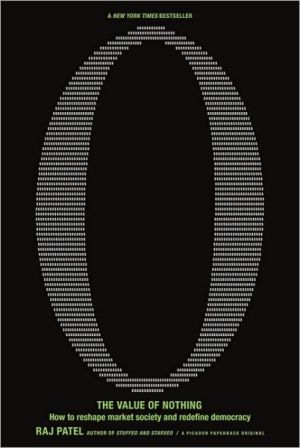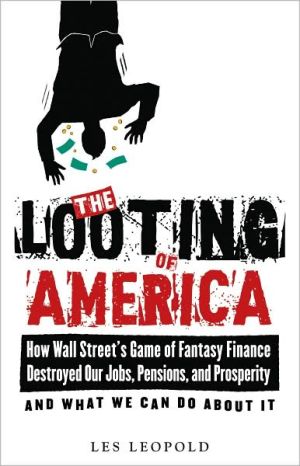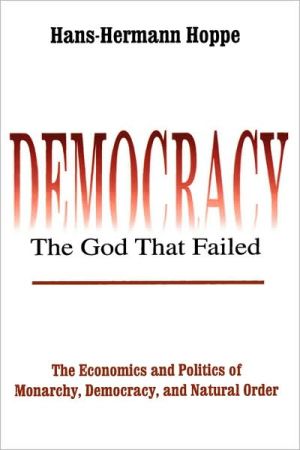Rich Christians in an Age of Hunger: Moving from Affluence to Generosity
Do you want to make a true difference in the world? Dr. Ron Sider does. He has, since before he first published Rich Christians in an Age of Hunger in 1978. Despite a dramatic reduction in world hunger since then, 34,000 children still die daily of starvation and preventable disease, and 1.3 billion people, worldwide, remain in abject poverty. So, the professor of theology went back to re-examine the issues by twenty-first century standards. Finding that Conservatives blame morally...
Search in google:
Do you want to make a true difference in the world? Dr. Ron Sider does. He has, since before he first published Rich Christians in an Age of Hunger in 1978. Despite a dramatic reduction in world hunger since then, 34,000 children still die daily of starvation and preventable disease, and 1.3 billion people, worldwide, remain in abject poverty. So, the professor of theology went back to re-examine the issues by twenty-first century standards. Finding that Conservatives blame morally reprehensible individual choices, and Liberals blame constrictive social and economic policy, Dr. Sider finds himself agreeing with both sides. In this new look at an age-old problem, he offers not only a detailed explanation of the causes, but also a comprehensive series of practical solutions, in the hopes that Christians like him will choose to make a difference.
\ \ \ \ \ Chapter One\ \ \ A Billion Hungry Neighbors\ \ \ Sometimes I think, "If I die, I won't have to see my children suffering as they are." Sometimes I even think of killing myself. So often I see them crying, hungry; and there I am, without a cent to buy them some bread. I think, "My God, I can't face it! I'll end my life. I don't want to look any more!"\ —Iracema da Silva\ resident of a slum in Brazil\ \ \ * * *\ \ \ Can overfed, comfortably clothed, and luxuriously housed persons understand poverty? Can we truly feel what it is like to be a nine-year-old boy playing outside a village school he cannot attend because his father is unable to afford the books? (Which, incidentally, would cost less than my wife and I spent on entertainment one evening during the writing of this book.) Can we comprehend what it means for poverty-stricken parents to watch with helpless grief as their baby daughter dies of a common childhood disease because they, like at least one-quarter of our global neighbors today, lack access to elementary health services? Can we grasp the awful truth that thirty-four thousand children die every day of hunger and preventable diseases?\ To help us imagine what poverty means, a prominent economist itemized the "luxuries" we would have to abandon if we were to adopt the lifestyle of our 1.3 billion neighbors who live in desperate poverty.\ \ \ We begin by invading the house of our imaginary American family to strip it of its furniture. Everything goes: beds, chairs, tables,television set, lamps. We will leave the family with a few old blankets, a kitchen table, a wooden chair. Along with the bureaus go the clothes. Each member of the family may keep in his "wardrobe" his oldest suit or dress, a shirt or blouse. We will permit a pair of shoes for the head of the family, but none for the wife or children.\ We move to the kitchen. The appliances have already been taken out, so we turn to the cupboards.... The box of matches may stay, a small bag of flour, some sugar, and salt. A few moldy potatoes, already in the garbage can, must be hastily rescued, for they will provide much of tonight's meal. We will leave a handful of onions, and a dish of dried beans. All the rest we take away: the meat, the fresh vegetables, the canned goods, the crackers, the candy.\ Now we have stripped the house: the bathroom has been dismantled, the running water shut off, the electric wires taken out. Next we take away the house. The family can move to the toolshed....\ Communications must go next. No more newspapers, magazines, books—not that they are missed, since we must take away our family's literacy as well. Instead, in our shantytown we will allow one radio....\ Now government services must go. No more postman, no more firemen. There is a school, but it is three miles away and consists of two classrooms.... There are, of course, no hospitals or doctors nearby. The nearest clinic is ten miles away and is tended by a midwife. It can be reached by bicycle, provided that the family has a bicycle, which is unlikely....\ Finally, money. We will allow our family a cash hoard of $5.00. This will prevent our breadwinner from experiencing the tragedy of an Iranian peasant who went blind because he could not raise the $3.94, which he mistakenly thought he needed to receive admission to a hospital where he could have been cured.\ \ \ It is difficult to obtain precise statistics, but the best estimate is that 1.3 billion people live in that kind of grinding poverty. According to a World Bank study released in 1996, they live on less than one dollar a day. In addition to these 1.3 billion who live in almost absolute poverty, another two billion are very poor. In fact, a majority of people today—three billion—live on less than two dollars a day.\ Hunger and starvation stalk our world. Famine and disease are alive and well on planet earth. Thirty-four thousand children die every day of hunger and preventable diseases. Seventeen million people die every year from infectious and parasitic diseases we know how to prevent.\ The news, however, is not all bad. We have made great progress in some developing countries over the past few decades. Since 1970, both the number and percentage of hungry people—i.e., those who regularly lack enough calories for an active healthy life—have fallen significantly in the developing countries. In 1970, 918 million people, or 35 percent of the developing world, were chronically undernourished. By 1991, those figures had fallen to 841 million people, which was 20 percent of the people in the developing countries.\ The main reason for this improvement has been the dramatic growth of many of the economies in Asia, where much of the world's poor lives. The number of chronically undernourished in Asia declined from 785 million (36 percent of the region's population) in 1975 to 540 million (20 percent of the population) in 1990. Indonesia is one of the success stories. It has experienced healthy economic growth (4.2 percent GNP per capita each year from 1980-1993) and was able, during the 1970s and 1980s, to use that wealth to reduce poverty from almost 60 percent to less than 20 percent of the population.\ Unfortunately, the picture is not so bright in Africa and Latin America. The number of hungry people in Latin America has risen slightly, from 53 million in 1970 to 58 million in 1990. In Sub-Saharan Africa, both the number and percentage of hungry people have increased. In 1970, the figure was 103 million (38 percent of the region's population). By 1991 it rose to 215 million (43 percent of the population).\ We cannot know the exact number of people lacking minimally adequate diets, clothing, and shelter. And it varies depending on harvests, war, and natural disasters. Even though we have seen some significant improvement, the overall picture is still tragic. Over a billion desperate neighbors live in wrenching poverty—and another two billion are poor.\ \ \ New Economic Divisions in the World\ \ \ Almost all of the 1.3 billion desperately poor people live in what used to be called the Third World. For many years, all countries that were not a part of the developed world (whether capitalist or communist) were lumped together as "Third World" nations. But changes in the last twenty years, especially since the four-fold increase of oil prices in 1973-1974, have necessitated a new division. The World Bank's World Development Report 1995 divides countries into four categories: low income, lower-middle income, upper-middle income, and high income.\ Low-income countries (3.1 billion people). India, China, Bangladesh, Pakistan, and many African countries, including Ethiopia, Burundi, Chad, Tanzania, Nigeria, and some of the former Soviet bloc countries, such as Georgia and Armenia, belong to the low-income countries. The per capita GNP in low-income countries ranges from $90 to $660 per year. The World Development Report 1995 states that infant mortality rates are nine times higher in the low-income countries than in the developed world (i.e., the high-income countries), and population growth rates are higher (see Tables 2 and 5). Typically, only 59 percent of people in low-income countries are literate, though in Burkina Faso literacy is 18 percent and in Armenia it is 99 percent.\ There have been significant improvements in a number of these low-income countries, including dramatic change in China. We know what to do to reduce the agony even more. Yet hundreds of millions still live unnecessarily in appalling conditions.\ Lower-middle-income countries (1.1 billion people). This category includes many Latin American countries, such as Bolivia ($760), a few of the richest African nations like Cameroon ($820), many of the former Soviet bloc, such as Ukraine ($820) and Russia ($2,340), and some Asian nations like the Philippines ($850) at the bottom of the scale and Thailand ($2,110) at the top. The annual per capita GNP in these countries range from $696 to $3005. These countries have a somewhat brighter future although they still have large numbers of very poor people.\ Upper-middle-income countries (501 million people). Included in this category are the richest Latin American nations (e.g., Argentina and Mexico) and rapidly developing nations like South Korea. Per capita GNP ranges from Venezuela's $2,840 to Portugal's $9,130.\ High-income countries (812 million people). Per capita GNP in these developed countries ranges from New Zealand's $12,600 to Switzerland's $35,760. For the U.S., it is $24,740, the UK, $18,060, and Japan, $31,490.\ \ \ Uneven Distribution\ \ \ Over the past few decades, economic growth in the developing countries has differed by region. We see healthy growth in most areas during 1965-73. However, beginning in the 1970s, the regions begin to diverge. The annual growth of the Gross Domestic Product (GDP) in Sub-Saharan Africa was actually 1 percent during the 80s. But the population was growing so fast that the per capita GDP actually declined an average of 0.8 percent each year from 1980 to 1993. Latin America's per capita growth slowed in the late 70s and then declined slightly during the 80s and early 90s. This is in stark contrast to the situation in East and South Asia. East Asia, including China, South Korea, and Taiwan, experienced annual per capita growth of 6.4 percent from 1980 to 1993. South Asia, including India and Pakistan, experienced an annual 3 percent per capita growth during the same period.\ Economic growth by itself, however, is not enough. Everyone in a country, especially the poorest, should benefit. Too often, however, overall economic growth primarily benefits the richest. In Brazil a military dictatorship strongly supported by the United States fostered real economic growth at the rate of 10 percent per year from 1968 to 1974. Growth of about 9 percent per year continued through 1980, and then slowed to 0.3 percent from 1980 through 1993.\ Who profited? Even Brazil's own minister of finance admitted in 1972 that only 5 percent of the people had benefitted from the fantastic growth of the Brazilian economy. The Brazilian government did not challenge a 1974 study showing that the real purchasing power of the poorest two-thirds of the people had declined by more than one-half in the preceding ten years. In 1989, two-thirds of Brazilian families tried to survive on less than $500 a month. In 1980, 40 percent of the total population suffered from malnutrition. In 1980-93, 16 percent of all children under age five suffered from moderate or severe stunting due to malnutrition.\ Today 60 million Brazilians live in extreme poverty. Thirty-two million go hungry every day. In 1989 (the most recent figures available), the richest 10 percent of the population received 51.3 percent of the country's income, while the poorest sixty percent received 15.9 percent. Tragically, Brazil's rapid economic growth has done far too little to help the people who need it most.\ In contrast, Indonesia, a large, populated country with vast natural resources like Brazil, experienced annual economic growth of 3.5 percent from 1960 to 1970 and 7.8 percent from 1970 to 1981. The poor fared much better over this period. In 1976, the poorest 40 percent in Indonesia received 14.4 percent of the national income. By 1987, their share increased to 21.2 percent. In Brazil, in 1972, the poorest 40 percent received 7.0 percent—and only 8.1 percent in 1983.\ The Alarins are a poor Philippino family. Mr. Alarin makes 70 cents on good days as an ice vendor. Several nights a month Mrs. Alarin stays up all night to make a coconut sweet which she sells on the street. Total income for her midnight toil is 40 cents. Cooking utensils are their only furniture. The family had not tasted meat for a month when the president of World Vision visited them and wrote this account:\ \ \ Tears washed her dark, sunken eye-sockets as she spoke: "I feel so sad when my children cry at night because they have no food. I know my life will never change. What can I do to solve my problems? I am so worried about the future of my children. I want them to go to school, but how can we afford it? I am sick most of the time, but I can't go to the doctor because each visit costs two pesos [28 cents] and the medicine is extra. What can I do?" She broke down into quiet sobbing. I admit without shame that I wept with her.\ \ \ The tears and agony of the world's poor are captured in the words of Mrs. Alarin. World poverty is a hundred million mothers like Mrs. Alarin, weeping because they cannot feed their children.\ \ \ Famine Redefined\ \ \ The rich today can ignore famine because it manifests itself differently than in the past.\ \ \ In earlier historical periods, ... whole nations ... experienced widespread starvation and death. Today the advancement in both national and international distribution systems has concentrated the effects of food scarcity among the world's poor, wherever they are.\ \ \ People with money can always buy food; famine affects only the poor. When food scarcity triples the price of grain imports, as it did from 1972 to 1974, middle- and upper-income persons in developing countries continue to eat. But people already devoting 60 to 80 percent of their income to food simply eat less and die sooner. Death usually results from diseases that underfed bodies cannot resist.\ Children are the first victims. In low-income countries, the infant mortality rate is nine times higher than in high-income countries. Malnutrition contributes to the death of many children. In 1994, UNICEF reported that 190 million children under five were chronically malnourished. The same report named malnourishment as a factor in one-third of the 13 million deaths of children under five each year.\ There is hope, however. In three years, Tanzania's nutrition program more than halved the rate of severe malnutrition. The cost of Tanzania's nationwide program today is $2.50 per child. We could drastically reduce the high child mortality rates in developing countries, which are about nine times higher than those in established market economies. According to the World Bank, "if death rates in poor countries were reduced to those prevailing in rich countries, 11 million less children would die each year."\ Are rich Christians generous enough to save these lives?\ Carolina Maria de Jesus helps us feel the terror and anguish endured by the poor in a land where they could have enough food. This uneducated but brilliant woman struggling to survive in the slums of Brazil's second largest city, Sao Paulo, kept a daily record of her feelings on scraps of paper. Later they were published in a gripping diary called Child of the Dark.\ \ \ Today I'm sad. I'm nervous. I don't know if I should start crying or start running until I fall unconscious. At dawn it was raining. I couldn't go out to get any money [she gathered junk each day to earn money for food].... I have a few tin cans and a little scrap that I'm going to sell to Senhor Manuel. When Joao came home from school, I sent him to sell the scrap. He got 13 cruzeiros. He bought a glass of mineral water: two cruzeiros. I was furious with him....\ The children eat a lot of bread. They like soft bread but when they don't have it, they eat hard bread....\ Oh Sao Paulo! A queen that vainly shows her skyscrapers that are her crown of gold. AB dressed up in velvet and silk but with cheap stockings underneath—the favela [the slum].\ The money didn't stretch far enough to buy meat, so I cooked macaroni with a carrot. I didn't have any grease, it was horrible. Vera was the only one who complained yet asked for more.\ "Mama, sell me to Dona Julita, because she has delicious food."\ \ \ A former president of World Vision visited the home of Sebastian and Maria Nascimento, a poor Brazilian couple whose home was a one-room, thatched lean-to with a sand floor. Inside, one stool, a charcoal hibachi, and four cots covered with sacks partly filled with straw were the only furniture. He wrote this heart-rending account about his visit:\ \ \ My emotions could scarcely take in what I saw and heard. The three-year-old twins, lying naked and unmoving on a small cot, were in the last act of their personal drama. Mercifully; the curtain was coming down on their brief appearance. Malnutrition was the villain. The two-year-old played a silent role, his brain already vegetating from marasmus, a severe form of malnutrition.\ The father is without work. Both he and Maria are anguished over their existence, but they are too proud to beg. He tries to shine shoes. Maria cannot talk about their condition. She tries, but the words just will not come. Her mother's love is deep and tender, and the daily deterioration of her children is more than she can bear. Tears must be the vocabulary of the anguished soul.\ \ \ Carolina's little girl need not have begged to be sold to a rich neighbor. And while Sebastian and Maria's twins lay dying, there was an abundance of food in the world. But it was not divided fairly. The well-to-do in Brazil had plenty to eat. Over two hundred million U.S. citizens were consuming enough food (partly because of high consumption of grain-fed livestock) to feed over one billion people in the poor countries. Oxford economist Donald Hay has pointed out that a mere 2 percent of the world's grain harvest would be enough, if shared, to erase the problem of hunger and malnutrition around the world!\ This is how famine has been redefined, or rather, redistributed! It no longer inconveniences the rich and powerful. It strikes only the poor and powerless. Since the poor usually die quietly in relative obscurity, the rich of all nations comfortably ignore this kind of famine. But famine—redefined and redistributed—is alive and well. Even in good times, millions and millions of persons go to bed hungry, and children's brains vegetate and their bodies succumb prematurely to disease.\ \ \ Poverty's Children\ \ \ Poverty means illiteracy, inadequate medical care, disease, and brain damage.\ \ \ Illiteracy\ \ \ Only 48 percent of India's 866.5 million people could read in 1990. For Pakistan's 116 million, the number is 36 percent. In 1960 only 40 percent of the developing world was literate, but that increased to 64 percent by 1990. However, the number of people who cannot read also has grown, and the increase in literacy has not kept pace with population growth. Consequently, the number of illiterates has increased by nearly 120 million since 1960—to 940 million in 1990. Nor has literacy spread evenly. In Africa, 50 percent are literate. The figure is 60 percent in Asia and 84 percent in Latin America.\ \ \ Inadequate Medical Care and Disease\ \ \ People in the industrialized North have enjoyed the security of modern medicine for so long that we assume it is now available for all. Indeed, things have gotten better. The World Bank reports that health conditions across the world have improved more in the past 40 years than in all preceding human history. In 1950, life expectancy in the developing countries was 40 years. In 1990, it was 63 years. Child mortality (under age 5) was 280 out of 1,000 in 1950, but had declined to 101 out of 1,000 by 1994.\ In spite of these improvements, the United Nations reports that 1.45 billion people still have no access to health services; 1.33 billion do not have access to safe water; and 2.25 billion do not have access to sanitation. This is significant because in houses with clean water and sanitation, children are 60 percent less likely to die than in houses without those services. In addition, 17 million people die each year from infectious and parasitic diseases such as diarrhea, malaria, and tuberculosis.\ Lacking both food and medicine, poor nations have a much higher infant mortality rate than the developed world.\ The cost of cleaner water and better sanitation is relatively small. The World Health Organization has reported that an annual increase in preventive care of 75 cents per person in the Third World could save 5 million lives every year. That would take less than $3 billion. Surely the people of the wealthier nations can find $3 billion to save 5 million people. The National Center for Health Statistics reports that people in the United States spend between $30 and $50 billion each year on diets and related expenditures to reduce their calorie intake.\ \ \ Brain Damage\ \ \ No one knows how many poor children have suffered irreversible brain damage due to insufficient protein during childhood. But in 1994 there were 190 million malnourished children under the age of five.\ \ \ Marli, a happy six-year-old girl from Rio de Janeiro is just one of these. Marli looks normal in every way. Healthy. Happy. There is just one thing wrong with her. She can't learn. At first the teachers thought perhaps her difficulty was psychological, the result of neglect in a family of eleven children. Her younger sister had the same problem. But after careful observation and testing, it became evident that Marli, a child of Brazil's poor and wretched favelas [slums], was unable to learn because as an infant her malnourished body could not produce a healthy brain.\ \ \ Permanent brain damage caused by protein deficiency is one of the most devastating aspects of world poverty. Eighty percent of total brain development takes place between conception and age two. Adequate protein intake—precisely what over one-third of all children under five in developing countries do not have—is necessary for proper brain development. A study in the early 1980s in Mexico found that a group of severely malnourished children under five had an IQ thirteen points lower than a scientifically selected, adequately fed control group. Medical science has demonstrated that severe malnutrition produces irreversible brain damage.\ When a poor family runs out of food, the children suffer most. For people eking out a day-to-day existence, an inactive child is not as serious a problem as an inactive wage earner. But malnutrition produces millions of retarded children that become a serious problem in the future.\ Hunger, illiteracy, disease, brain damage, death. That's what grinding poverty means. About one billion impoverished people of the world experience this anguish regularly. A little more help from rich nations would save many lives.\ Developing nations must also change their priorities. The United Nations reports that 12 percent of the $125 billion developing countries spend on the military each year could provide health care for all their citizens, including immunization of all children, elimination of severe malnutrition, reduction of moderate malnutrition by half, and provision of safe drinking water for all. According to UNICEF, developing country governments spend a total of approximately $440 billion per year. But just over 10 percent of that (about $50 billion) goes to nutrition, basic health care, primary education, family planning, clean water, and safe sanitation. If that proportion were increased to 20 percent, approximately $30 billion more per year would be available. In most countries, that would be enough to construct basic social safety nets.\ \ \ Making Progress\ \ \ The results of modest efforts can be dramatic. During the 1980s and 1990s, a few inexpensive actions saved the lives of millions of children. During that time, the immunization levels in the developing world rose from 20 percent to about 80 percent today. Not more than a decade ago, about 75 million children contracted measles each year and more than 2.5 million died. Today, thanks to improvements in health care and immunization, only 25 million children get measles each year—and only 1 million die. Vaccines now save the lives of at least 1.5 million children annually. And the vaccines cost an average of only $1.50 per child.\ Immunization levels have soared. The World Health Organization's immunization program in developing countries has helped to raise the number of children immunized against the six major diseases from 15 percent ten years ago to 80 percent today. The program saves more than 3 million lives per year yet costs a mere $15 per child ($1.4 billion per year). Every $1 spent on childhood immunization saves $10 in future medical costs.\ The success story on river blindness shows how much can be done at a modest cost. A cooperative effort among the Food and Agriculture Organization (FAO), the United Nations Development Programme (UNDP), the World Bank, and the World Health Organization (WHO) set out in 1974 to combat river blindness in eleven African countries. Spread by a parasitic worm, this disease causes intense itching, debilitation, and eventually blindness. The initial effort involved spraying biodegradable insecticides (which are harmless to the environment) and using drugs developed and donated by Merck & Co. The program has been a wonderful success. Each year it protects more than 30 million people from the disease, at an annual cost of less than $1 per person. More than 1.5 million people who were once seriously infected have totally recovered. The total cost of the project, from 1974 to its anticipated conclusion around 2002, will be about $570 million. In addition to protecting millions of people, the project allows farmers to return to more than 60 million acres of previously abandoned cropland.\ Iodine deficiency is another terrible problem that could be easily solved. Goitre, the swelling of the thyroid gland due to iodine deficiency, results in mental impairment and affects 655 million people. Of these, 26 million suffer brain damage and 5.7 million will become cretins (people with stunted, deformed bodies and brains). The solution? Iodize each country's salt supply, which costs only 5 cents per person per year. The total cost of such a program would be around $100 million—less than two modern fighter planes.\ Oral rehydration therapy (ORT) is an inexpensive health procedure that prevents children from dehydrating from diarrhea. In 1980, 10,000 children died every day from diarrheal dehydration. By 1993, that was down to 5,000. But that is still about two million every year that could be saved. Bags of oral rehydration salts cost about 10 cents each. They can be used by parents themselves. With a little more help, millions more would live.\ In the 1990 World Summit for Children, held by UNICEF, more than 100 developing countries set ten goals for immunization and health care for 1995 and ten more for 2000. One goal for 1995 was the immunization of at least 80 percent of the children against the six major vaccine-preventable childhood diseases. Many of the countries have reached that goal. A goal for the year 2000 is the elimination of polio around the world. Specialists disagree as to whether or not total eradication can happen by 2000. But we have—thanks to a cooperative effort of Rotary International, the United Nations, and the World Health Organization—already made enormous progress. By 1991, we had successfully eliminated polio in the Western Hemisphere. By 1996, that success had spread to 145 countries.\ We are making progress. Modest expenditures have reduced malnutrition and greatly increased immunization levels. Approximately 2.5 million fewer children will die in 1996 than in 1990. UNICEF estimates that the total cost of providing basic social services in the developing countries, including health, education, family planning, and clean water, would cost $30 to $40 billion per year. The rich of this world spend more than this on golf each year.\ Progress in reducing poverty, of course, does not flow only from improved health care for the poor. Expanding market economies have significantly reduced poverty in Asia (see chapter 8). And there are a wide range of changes—both personal and structural—that you and I can make to reduce the agony of poor people (see chapters 9-11).\ \ \ Population\ \ \ The population explosion is another fundamental problem. Not until 1830 did the world have one billion people. It took only one hundred years more to add another billion. Within a mere thirty years another billion human beings appeared. The fourth billion arrived in only fifteen years, by 1975. And by mid-1995, the earth held more than 5.7 billion people. The Population Bulletin predicts that world population will reach 6 billion before the turn of the century (see Table 3). Experts predict that we will reach 7 billion by the year 2010. The median prediction for the year 2050 is 10 billion.\ There is good news here, too, however. Fertility rates (the average number of children each woman will bear) have declined from 6.1 births per woman in the early 1960s to 3.6 in 1994. The population, though, is far from stable. The reason? So many young people are entering their reproductive years. Even if most couples today have fewer children than previous generations (which they are doing), the number of children born still will be higher than in past decades.\ A population of 100 million people growing at 1.5 percent per year expands to 145 million in 25 years, and 443 million in 100 years. And a population of 100 million growing at 3 percent (which is the rate for Sub-Saharan Africa, which has 586 million people expands to 438 million in 50 years and 1,922 million in 100 years.\ The population explosion prompts some people to apocalyptic hysteria. One group ran an advertisement in 1976 in many newspapers, including the New York Times and the Wall Street Journal. Drafted by William Paddock and Garrett Hardin, among others, the statement declared, "The world as we know it will likely be ruined before the year 2000.... The momentum toward tragedy is at this moment so great that there is probably no way of halting it."\ Such views are alarmist, pessimistic, and flatly untrue, as Harvard professor Amartya Sen pointed out in a careful assessment in 1994. Population trends in the last twenty years offer some hope. Whereas the overall population growth rate in the world was about 2 percent in 1960, the Population Reference Bureau's 1995 World Population Data Sheet indicates that it has dropped to 1.5 percent. We can be grateful for the improvement. But the present rate of population growth is still dangerously high. At this rate, the population will double in forty-five years, to over 11 billion people. We are already damaging the environment to feed today's 5.7 billion—and not all of those receive sufficient food.\ In considering the issue of population growth, it is important to remember that although Northern developed nations now have much lower population growth rates than developing nations (see Table 5), the number of children per family in Western Europe and North America was much higher in the latter half of the last century than the two children per family common now. Infant mortality rates of course were also higher. Despite this, however, family size and population growth in the industrializing nations at that time were quite close to the size and growth rates in many developing countries since World War II. Affluence and decline in population growth seem to go together, in the long term anyway.\ Fortunately, empowering the poor is a quick way to reduce the population explosion (see chapters 2 and 11). When poor people receive adequate food, health care, and education (especially women), population growth drops dramatically.\ \ \ Limits to Growth?\ \ \ Along with widespread poverty and the population explosion, a third set of complex, interrelated issues makes our dilemma even more difficult. How long can the earth sustain the present rate of industrialization? What will be the effect of the resulting pollution?\ In 1992, the U.S. National Academy of Sciences and the Royal Society of London issued a joint report that began, "If current predictions of population growth prove accurate and patterns of human activity on the planet remain unchanged, science and technology may not be able to prevent either irreversible degradation of the environment or continued poverty for much of the world." In 1993, 58 national science academies from around the world issued a similar warning.\ During the 1980s, per capita levels of arable land fell by 1.9 percent annually. UNICEF reports that every year 42 million acres (the size of Oklahoma) of tropical forests are destroyed and about 15 million acres (the size of West Virginia) of dry lands turn into deserts. Approximately 67 million acres of soil (the size of Colorado) lose virtually all their productivity each year. In addition, an area the size of India and China combined (about 1.2 billion acres) has been significantly downgraded for agricultural production. Scientists warn that carbon dioxide and other "greenhouse gases" are slowly warming the world to a point where catastrophic changes in climate are possible in the next century.\ \ \ The Future and Our Response\ \ \ Widespread hunger, the population explosion, environmental decay, and the possible necessity of slowing industrialization (at least in the affluent nations) compound the difficulties of trying to share the world's resources more justly. Not surprisingly, predictions of doomsday are legion. What are our prospects?\ Senator Mark Hatfield (a prominent evangelical leader and four-term Republican Senator) warned, "The greatest threat to this nation [the United States] and the stability of the entire world is hunger. It's more explosive than all the atomic weaponry possessed by the big powers. Desperate people do desperate things, and remember that nuclear fission is now in the hands of even the developing nations."\ A U.S. Presidential Commission on World Hunger (composed of Democrats and Republicans, conservatives and liberals) repeated this warning:\ \ \ The most potentially explosive force in the world today is the frustrated desire of poor people to attain a decent standard of living.... The Commission believes that promoting economic development in general, and overcoming hunger in particular, are tasks far more critical to U.S. national security than most policy makers acknowledge or even believe. Since the advent of nuclear weapons, most Americans have been conditioned to equate national security with the strength of strategic military forces. The Commission considers this prevailing belief to be a simplistic illusion.\ \ \ In a 1992 address, U.N. Secretary General Boutros Boutros-Ghali stated that the deepest causes of conflict are "economic despair, social injustice, and political oppression. Only a society of democratically protected human rights can offer the stability that can sustain development over time." Global cooperation to reduce hunger and injustice is essential for enduring peace.\ What will Christians do in this time of swelling affluence and persistent poverty? Will we dare to remember that the God we worship tells us that "whoever is kind to the poor lends to the Lord" (Proverbs 19:17)? Will Christians have the courage to seek justice for the poor, even if that means disapproval by affluent neighbors?\ Where will you and I stand? With the starving or the overfed? With poor Lazarus or the rich man? Most of the rich countries are at least nominally Christian. What an ironic tragedy that an affluent, "Christian" minority in the world continues to hoard its wealth while hundreds of millions of people hover on the edge of starvation!\ One popular fundamentalist newsletter (with a circulation of over 60,000) has called on Christians to stockpile new dried foods. In a most ingenious combination of apocalyptic piety and slick salesmanship, the newsletter quoted several "Bible scholars" to prove that some Christians will live through the tribulation. And the conclusion? Since we cannot be absolutely certain where we will be during the tribulation, we ought to purchase a seven-year supply of reserve foods for a couple of thousand dollars!\ In an age of affluence and poverty most Christians, regardless of theological labels, are tempted to succumb to the heresy of following society's materialistic values rather than biblical truth. Advertisements offer demonically convincing justifications for enjoying our affluence and neglecting three billion poor neighbors.\ Imagine what one quarter of the world's Christians could do if they became truly generous. A few of us could move, as David and Carol Bussau did, to desperately poor areas. The rest of us could defy surrounding materialism. We could refuse to let our affluent world squeeze us into its consumeristic mold. Instead, we could become generous non-conformists who love Jesus more than wealth. In obedience to our Lord, we could empower the poor through small loans, community development, and better societal systems. And in the process, we would learn again his paradoxical truth that true happiness flows from generosity.\ \ \ * * *\ \ \ Study Questions\ \ \ 1. What are your strongest feelings as you read this chapter?\ 2. What facts were most surprising to you? Most disturbing?\ 3. How has famine been redefined?\ 4. What concretely does poverty mean in day-to-day life?\ 5. How do you think most Christians you know would respond if they truly understood the problem of world hunger?
Forewordxi Preface to the Twentieth Anniversary Editionxiii Acknowledgmentsxix PART ONE: POOR LAZARUS AND RICH CHRISTIANS 1. A Billion Hungry Neighbors1 New Economic Divisions in the World3 Uneven Distribution5 Famine Redefined7 Poverty's Children9 Making Progress12 Population14 Limits to Growth?17 The Future and Our Response17 2. The Affluent Minority21 Promises, Promises22 Where Did It All Begin?23 How Affluent Are We?24 Poverty at $40,000 a Year?30 How Generous Are We?31 Rationalizing Our Affluence33 PART TWO: ABIBLICAL PERSPECTIVE ON THE POOR AND POSSESSIONS 3. God and the Poor41 Pivotal Points of Revelation History42 God Identifies with the Poor49 God's Special Instruments50 Why Does God Cast Down the Rich?52 God's Concern and Ours57 Is God on the Side of the Poor?63 4. Economic Fellowship and Economic Justice67 Capital in an Agricultural Society68 The Year of Jubilee69 The Sabbatical Year72 Laws on Tithing and Gleaning74 Models to Follow and Avoid75 Jesus' New Community77 The Jerusalem Model79 Economic Koinonia83 How Then Shall We Live?89 5. Thinking Biblically about Property and Possessions91 Private Property91 The Danger of Riches95 The Ring and the Beloved99 Righteousness and Riches101 Carefree Living104 6. Social Evil: Sin Embedded in Societal Systems109 The Old Testament111 The New Testament117 God's Response118 PART THREE: WHAT CAUSES POVERTY? 7. Poverty's Complex Causes125 Sinful Personal Choices125 Unbiblical Worldviews126 Disasters127 Lack of Technology128 Great Inequalities of Power128 Western Colonialism133 8. Structural Injustice Today137 Evaluating Market Economies139 International Trade147 The International Debt Crisis153 Destroying the Environment and the Poor157 Eating Food from Hungry Nations166 Multinational Corporations in Developing Countries171 Repentance184 PART FOUR: IMPLEMENTATION 9 Toward a Simpler Lifestyle: The Graduated Tithe and Other Modest Proposals189 The God of North America191 Some Examples192 The Graduated Tithe193 Communal Living196 Guidelines for Giving197 Some Practical Suggestions198 Evaluating Organizations200 How Generous Are We?204 The Sabbath and Our Lifestyles206 A Call for Loyalty207 10. Watching Over One Another in Love209 A Sociological Perspective211 New Patterns of Christian Community213 A Congregation of House Churches214 The Individual House Church218 "All Things in Common"219 Glass Cathedrals in an Age of Hunger?220 The Triple Five Plan221 11. Making the World More Fair223 Ambulance Drivers or Tunnel Builders?224 Who Will Be Helped?227








